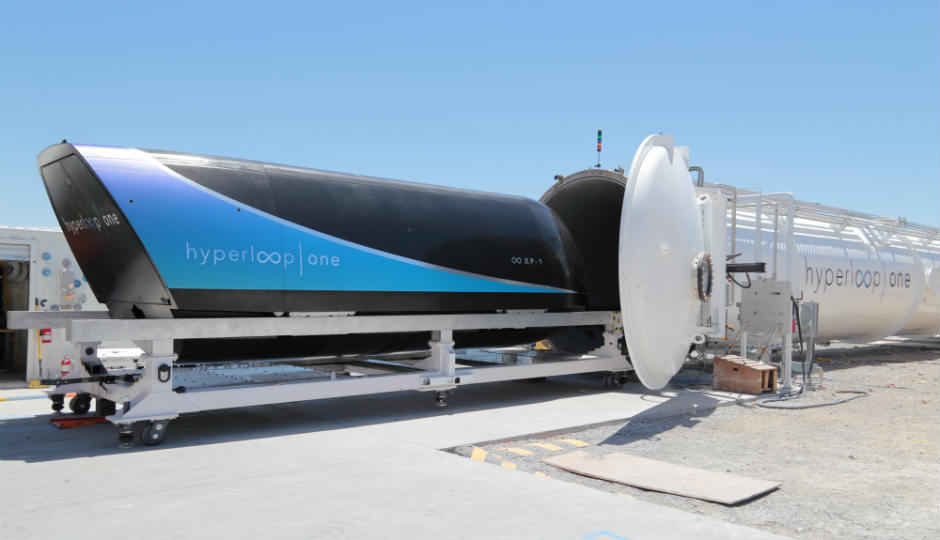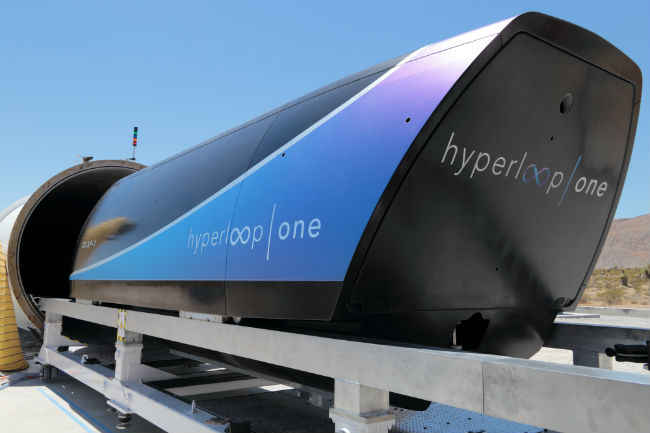Hyperloop One completes phase 2 test run, achieving 300kph speeds over 500 metres

The second phase of testing saw Hyperloop One's HP-1 pod levitate through its 500 metre test track in the Nevada desert.
If you’ve heard about Elon Musk’s Hyperloop concept, you know it’s a pipe dream (see what we did there?). Nevertheless, Musk’s once proposed concept is nearing fruition today, and while there are various contractors working on it, it’s Hyperloop One that seems to be making good progress. The company is not only the closest to building an actual hyperloop, but also the only one to have demonstrated actionable interest in India. The team from Hyperloop One came to India on February 28, joining hands with the Government to build hyperloops in the country.
All that is still somewhere in the future though. On July 29, Hyperloop One completed phase 2 of its test runs, achieving faster speeds and testing with an actual hyperloop pod this time. The pod itself is known as the XP-1 and it was tested on Hyperloop One’s DevLoop test track in the Nevada desert. The company hit peak speeds of 310 kmph, which is 2.7x faster than its first test run a short while back.
The pod also covered a 4.5 times longer distance, running for 500 meters in the test track. Hyperloop One says it accelerated for 300 meters and then glided on the track using magnetic levitation. “This is the new beginning, and the dawn of a new era of transportation,” said Shervin Pishevar, Executive Chairman and Co-Founded of Hyperloop One.
Sounds like the future
“When you hear the sound of the Hyperloop One, you hear the sound of the future,” Pishevar added. The company even provided some B-roll footage, including sounds made by the pod. To Pishevar’s credit, it does sound similar to Tie fighters in Star Wars movies. “We’ve proven that our technology works, and we’re now ready to enter into discussions with partners, customers and governments around the world about the full commercialization of our Hyperloop technology,” said Rob Lloyd, CEO of Hyperloop One.
Phase 2 and XP-1
This is also the first time we got a look at Hyperloop One XP-1 pod. It’s made of carbon fiber panels, which are lightweight, but stronger than steel. On the other hand, the levitating chassis is made using structural aluminium. It’s built to be light, but strong, just like a Formula 1 car, says Hyperloop One. The pod is 8.7 meters long, 2.7 meter wide and nearly 8 feet tall.
To achieve the new speeds, Hyperloop One put the pod in a depressurized tube, in the equivalent of 200,000 air at 200,000 feet above sea level, says the company. “All components of the system were successfully tested, including the highly efficient electric motor, advanced controls and power electronics, custom magnetic levitation and guidance, pod suspension and vacuum system,” the company said.
Still some way to go
While phase 2 is indeed encouraging and demonstrates how close Hyperloop One has come to installing an actual hyperloop, there’s still some way to go. The theoretical speeds of the hyperloop concept are supposed to be faster than an aircraft, and even achieving those doesn’t guarantee success.
The next step for Hyperloop One is in convincing Governments to fund such systems in various countries, and create appropriate policies. The company had earlier announced that it would build a the world’s first hyperloop between Dubai and Abu Dhabi, a journey of 99 miles, which would be accomplished in 12 minutes. Various routes have been proposed in India as well, and the government has shown its interest, but actual implementation is still a long way to go.






